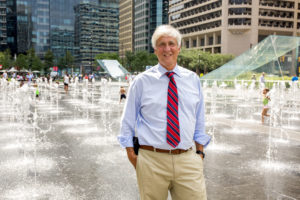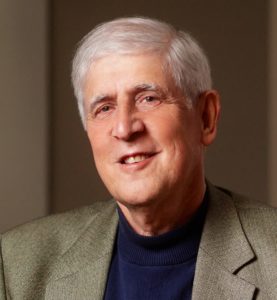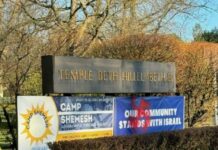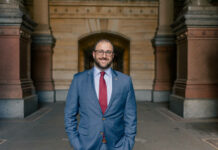
Paul Levy moved to Philadelphia in 1976. He had attended graduate school at Columbia University in New York City and experienced the city’s spiral “toward bankruptcy,” as he described it.
And right before he moved south, he was living on a farm in upstate New York where one winter the temperature dropped to 25 degrees below zero.
Levy, who was about to turn 30, said “enough living on a farm.” He started exploring options in Boston, North Jersey, where he was originally from, and Philadelphia. He chose the latter because his brother, Michael Levy, was working in its district attorney’s office.
But when Levy arrived, he started walking around and saw a similarly dense downtown to the one he experienced in New York. Then he walked a few blocks and recognized that, all of a sudden, he was in a neighborhood.
“I fell in love with the scale of the city,” he said. “It’s a small town that’s a big city. Very quickly, you meet a lot of people.”
And once Levy met people, he never left. Almost five decades later, he’s still living in Center City. And Parkway Corp. Chairman Joe Zuritsky, an associate for many years, said, “It’s Paul more than anyone who has built Center City.”
On Nov. 16 at the Down Town Club, a venue on Chestnut Street, Levy will receive the 2022 Civic Achievement Award from the American Jewish Committee Philadelphia/Southern New Jersey, a nonprofit that works to combat antisemitism and promote Israel. Levy is being honored for his many local accomplishments as the founding CEO of the Center City District, an organization that tries to make Philly an attractive destination for employees, residents and tourists, according to its website.
An AJC news release lists Levy’s accomplishments as “$151 million in streetscape, lighting, park and facade improvements,” the “$60 million reconstruction of Dilworth Park” next to City Hall and the renovation of four other parks.
Levy founded the Center City District in 1991. But in the 1980s, while still working for the city, he realized that the budget for community development had dropped from the last year of the Jimmy Carter administration in 1980 to the first year of the Ronald Reagan administration.
In the coming years, he would need to work with the private sector to achieve his goals.
“I came out of the 1960s,” he said. “Everything was about community commitment.”
Zuritsky remembers the city as “dark, dangerous and dirty” before Levy got to work. The sidewalks were unlit. Everyone went inside when the sun went down.
According to Zuritsky, in 1991 Jewish developer Ronald Rubin bought the Bellevue-Stratford Hotel on South Broad Street. After the purchase, Rubin wanted to fill his hotel with high-end tenants and “remake Walnut Street from Broad to Rittenhouse Square,” Zuritsky said.
Rubin researched other cities and discovered that they had created successful “special services districts.” These were clean, safe areas that could be taxed at higher levels for “special services,” Zuritsky said.
Zuritsky, Rubin and other businessmen determined that Philadelphia’s special services district should feature businesses. Developers are willing to take risks and invest in the future and, therefore, are more willing to be taxed at a higher level, Zuritsky explained.
The business leaders knew Levy because he was running the Philadelphia Parking Authority. Since Zuritsky led a private parking company, he saw Levy as a competitor and “jumped” at the chance to work with him. The businessmen tapped Levy to guide the development project.
“Paul created a district that was probably 98% business,” Zuritsky said. “Paul is brilliant.”
As Levy explained, his Center City District that led this effort did not construct any buildings. It just “set the stage.” Levy’s organization put in lower lights to illuminate sidewalks, cleaned up graffiti and “bought machines that blasted the sidewalk and got the gum off of it,” Zuritsky said.

These efforts were visible; they made people feel comfortable coming to Philadelphia again, and, according to Zuritsky, they galvanized migration to Center City. He estimated that “100,000 additional people have been drawn to Center City and its immediate surroundings.”
“All the areas that touch Center City have been rehabilitated and rebuilt,” he added.
Unfortunately in pandemic-era Philadelphia, that old “dark, dangerous” vibe has returned to a degree. Crime is rampant and residents talk of no longer feeling safe on the streets.
“The notion that cities were wonderful places for young people and to raise families, that was challenged,” Levy said.
So, for the man who remains the CEO of the Center City District, the rebirth must begin.
“Building people’s confidence,” he said. “That’s what started as our mission. And I think it’s our mission today.” JE






